It All Started at the End
Todo comenzó por el fin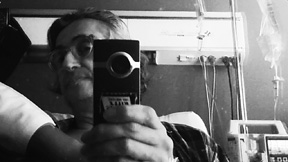 COLOMBIA / 2015 / Spanish / Color / Blu-ray / 208 min
COLOMBIA / 2015 / Spanish / Color / Blu-ray / 208 min
Director, Script, Producer, Source: Luis Ospina
Photography: Francisco Medina
Editing: Luis Ospina, Gustavo Vasco
Sound: Isabel Torres
Executive Producer: Sasha Quintero
Appearance: Luis Ospina, Andrés Caicedo, Carlos Mayolo, Beatriz Caballero, Vicky Hernández, Sandro Romero, Karen Lamassonne, Lina González
It All Started at the End is the self-portrait of the “Grupo de Cali,” also known as “Caliwood,” a group of cinephiles, who in the midst of the sex, drugs and rock and roll of the 70s and 80s and the historical chaos of Colombia, managed to produce a body of work now considered a fundamental part of Colombia’s film history. It is also the clinical history of the filmmaker, who fell gravely ill during the production of the film. It’s the story of a survivor. Ospina turned the camera on himself as he lay in his sickbed. It can therefore also be seen as a kind of “personal” film or “diary” film. As the production overlaps with Ospina’s medical condition, the film becomes a tale of one out of many who attempted to become part of the world of film—one who ultimately endured.
Remake, Remix, Rip-off
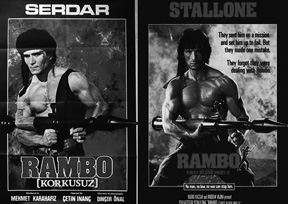 GERMANY, TURKEY / 2014 / Turkish, German / Color / Apple ProRes File / 96 min
GERMANY, TURKEY / 2014 / Turkish, German / Color / Apple ProRes File / 96 min
Director, Script, Editing: Cem Kaya
Photography: Meryem Yavuz, Tan Kurttekin
Sound: Gözen Atila, Özkan Cosgun, Emrah Yildirim, Gökhan Kirtas, Orçin Inceoglu
Music: ANADOL
Sound Mixing: Clemens Nürnberger
Appearance: Memduh Ün, Kunt Tulgar, Giovanni Scognamillo, Murat Özcan, Yılmaz Atadeniz, Birsen Kaya and others
Producer: Jochen Laube
Co-production: ZDF, Das kleine Fernsehspiel, Sommerhaus Filmproduktionen, Otomat, Cine+
Production Company, Source: UFA Fiction
Turkey in the 1960s and 1970s was one of the biggest producers of film in the world, even though its film industry, Yeşilçam, didn’t have enough written material to start with. Name any Western hit film, there’s a Turkish version of it, be it Tarzan, Dracula, The Wizard of Oz, Rambo, Superman or Star Wars. These quickly and cheaply produced look-alike movies were adapted to the taste of local audiences with huge success in the rural Anatolian hinterland. What they lacked in equipment and budget they compensated for through excessive use of manpower both behind and in front of the camera. Cem Kaya investigates Turkey’s culture of copying. He not only considers the way Turkish filmmakers have made adaptations of original works but looks also at the relationship between this film industry and historic and topical Turkish subjects such as internationalisation, censorship and the advent of television.
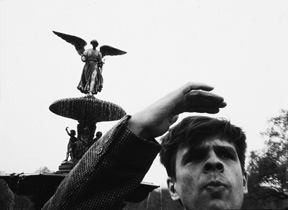 Me and My Brother
Me and My Brother
- USA / 1969, re-edited 1997 / English / Color, B&W / Apple ProRes File (Original: 35mm) / 95 min
Director, Photography: Robert Frank
Script: Robert Frank, Sam Shepard, Allen Ginsberg, Peter Orlovsky
Editing: Robert Frank, Helen Silverstein, Bob Easton, Lynn Ratener
Appearance: Julius Orlovsky, Joseph Chaikin, Christopher Walken, John Coe, Allen Ginsberg, Peter Orlovsky, Virginia Kiser, Nancy Fish, Cynthia McAdams, Roscoe Lee Browne, Seth Allen, Gregory Corso Producer: Helen Silverstein
Production Company: A Two Faces Company Production
Source: The Museum of Fine Arts, Houston
Me and My Brother, Frank’s first feature length film, places documentary footage of poets Allen Ginsberg, Peter Orlovsky, and Peter’s brother Julius within a fictional framework. Constantly delineating real and imaginary situations and moving back and forth between color and black and white, the film describes the inner and outer worlds of Julius, a catatonic, who silently observes the world around him, yet cannot restore his connection to it. In addition to the theme of schizophrenia, a number of elements in the film bring “performance” itself to the fore; Julius is played by himself but also by another actor and the film features cinéma vérité-style interviews. Frank himself also appears before the camera, forcing us to become aware of the frame, and thrusting us into the hinterland that exists between documentary and fiction (or metafiction), between that which is present and absent.
Jean-Luc Godard, Disorder Exposed
Jean-Luc Godard, le désordre exposé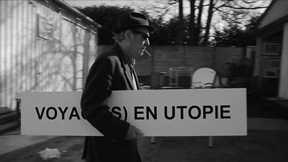 FRANCE / 2012 / French / Color / Apple ProRes File / 64 min
FRANCE / 2012 / French / Color / Apple ProRes File / 64 min
Director, Script: Céline Gailleurd, Olivier Bohler
Photography: Denis Gaubert
Editing: Aurelien Manya
Sound: Laurent Thomas
Music: Camille Fabre
Sound Editor: Jocelyn Robert
Appearance: André S. Labarthe
Producer: Raphaël Millet
Source: Institut National de l’Audiovisuel (INA)
In May 2006, Jean-Luc Godard’s exhibition Voyage(s) en utopie opened at the Pompidou Centre. With the comments of Godard’s old friend André S. Labarthe as our guide, this film takes us through the exhibition’s ruins, referencing Godard’s films—including hitherto unseen footage. A work with a preordained destiny of disorder, Voyage(s) en utopie gives us an understanding of some of his core ideas, and a new representation of Godard comes into view.
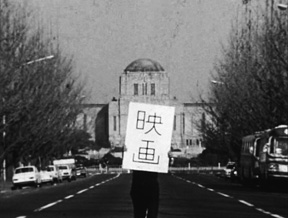 A Movie?
A Movie?
(Eiga)- JAPAN / 1971 / Japanese / Part Color / 8mm / 31 min
Director, Photography, Editing: Morita Yoshimitsu
Appearance: Morita Yoshimitsu, Mine Tomohide, Katsuyama Setsuko
Source: Morita Yoshimitsu Office
A Movie? is both a manifesto of filmmaking by independent filmmaker Morita Yoshimitsu, and a question, directed at himself and his audience; what is film? Appearing himself, Morita acts in a mixture of genres including romance, yakuza film, and political film, questioning the basic principles of film and searching for a new cinema. “I want to learn what you, the audience, think about film. Do you feel the madness in Okumura Akio’s A Wandering Madness? Don’t you want to play the super hero Moonlight Mask? Do you like Oshima Nagisa? Isn’t it expensive to go to the movies? What about this huge absence of opportunity for our cienamatic expression?”
